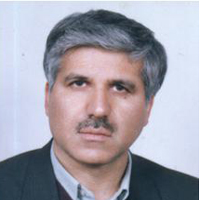Evaluation the suitability of the Darmian mountain rangeland in South Khorasan to exploit the potential of beekeeping
Beekeeping is one of the most common functions of rangelands, which can be developed to improve the livelihood of rangeland beneficiaries and their participation in range management. While many studies have focused on identifying attractive species for beekeeping, less research has been done on evaluating the suitability of rangelands for beekeeping. Therefore, this study aimed to evaluate the suitability of Darmian mountain rangeland in South Khorasan for beekeeping.
We determined the suitability of the rangeland for beekeeping based on ecological, economic, social, and environmental criteria and indicators. We calculated ecological indicators by analyzing vegetation statistics collected from 60 two-meter square plots located along 200-meter transects. Climatic information was obtained from the nearest meteorological station, while environmental indicators included distance from water sources, distance from roads, and different classes of land slope. We also evaluated the limitations and potentials of the region to exploit the potential of beekeeping by designing a set of questions in the form of a Likert scale. Based on the integration of maps in the GIS environment and the FAO limiting factor approach, we prepared a final suitability map for beekeeping, with categories of good (S1), medium (S2), low (S3), and non-suitability (N).
We identified 85 plant species in the Darmian rangelands, of which 65 species were identified as attractive species for honey bees. Plants with attractiveness class III and II had the highest presence in the plant composition, with 42.8% and 30.2%, respectively. Most species belonged to the Asteraceae, Lamiaceae, and Leguminosa families. Based on our results, 56.1% of the rangeland area (7661.8 hectares) was in the middle competency class (S2), 2% (274.9 hectares) was in the low competency class (S3), and 41.9% (5717.4 hectares) were in the inappropriate category (N). Temperature and relative humidity in the highlands of the region, the attractiveness index of plant species with humidity downstream of the region, and socio-cultural problems such as the lack or absence of knowledge related to beekeeping were the limiting factors for beekeeping suitability. Plant composition, wind speed, long flowering periods in some plant types, and a good market for honey consumption were among the factors that increased the competence and sustainability of beekeeping in the region.
Our findings suggest that 56.1% of the Darmian mountain rangeland is suitable for beekeeping. This can be used as a supplemental livelihood to increase the income of pastoralists and improve their economic situation. With the support of the government in providing facilities and holding training courses, the motivation of beekeepers to reduce livestock and focus on beekeeping can increase, leading to a more sustainable range management system.
- حق عضویت دریافتی صرف حمایت از نشریات عضو و نگهداری، تکمیل و توسعه مگیران میشود.
- پرداخت حق اشتراک و دانلود مقالات اجازه بازنشر آن در سایر رسانههای چاپی و دیجیتال را به کاربر نمیدهد.


